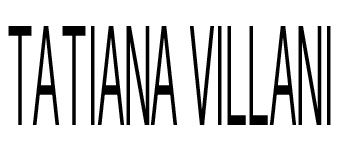Estrusione (35 cm)³ Massaciuccoli 2
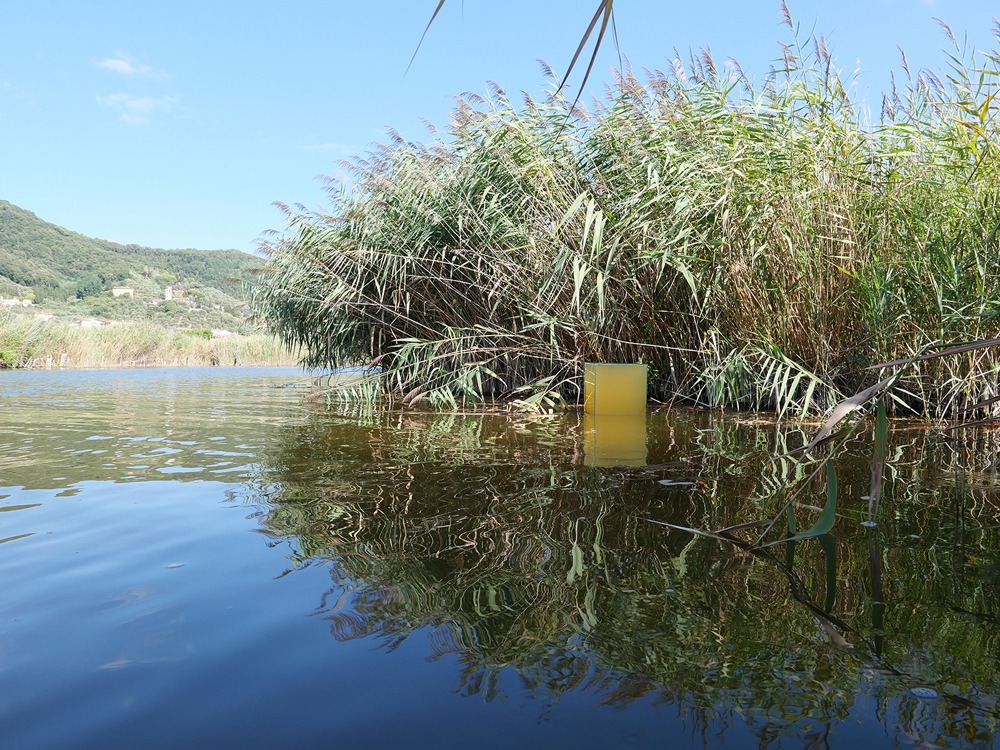
Il progetto Estrusione 35 cm³ è rappresentato da un dispositivo-scultura che può essere immerso in acqua e che produce un’emersione di una porzione dello specchio acquatico interessato, rendendo visibile quello che di solito è nascosto “sotto” per effetto del riflesso della luce.
Nasce nel 2017 a Empoli all’interno del progetto Un sentiero di segni/ Arte e Ambiente a cura di Alessandra Scappini.
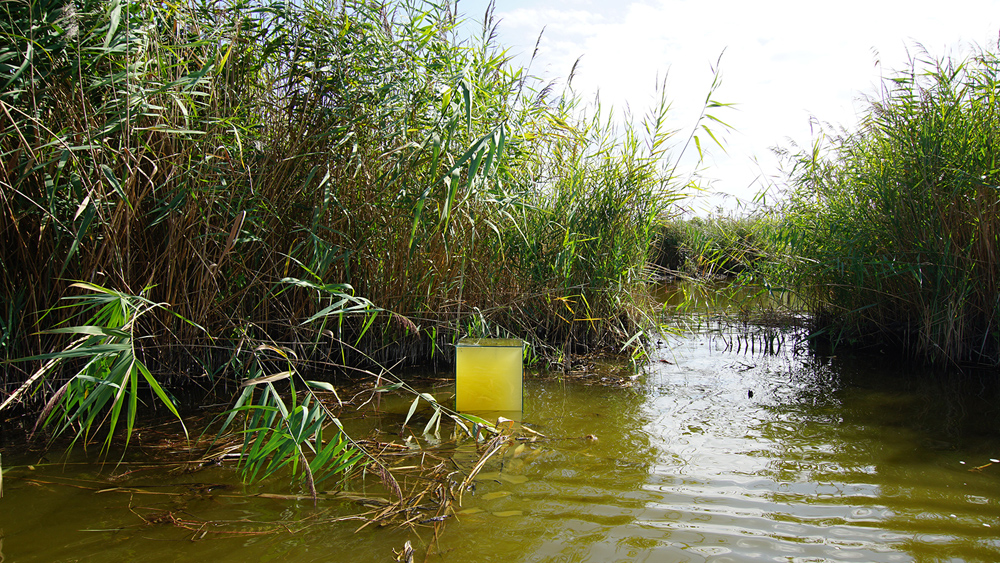
Sul Lago di Massaciuccoli l’estrusione è stata praticata in due tempi diversi.
La seconda estrusione effettuata i primi giorni di settembre 2020, avviene nel canale del Porto, proprio vicino all’ingresso di un “chiaro”; lo strumento ė stato posto su un “aggallato”, una piccola isola composta da un canneto galleggiante che lentamente fluttua sulle acque. Questi agglomerati hanno un’importanza capitale per l’ecosistema della riserva.
Qui l’estrusione evidenzia un’enorme differenza nel colore e nella densità dell’acqua, rispetto alla prima volta, ciò influenza il tipo di vita, vegetale e animale, che si trova in questi luoghi.
I chiari sono specchi d’acqua bassa, ambienti artificiali creati attraverso il taglio della vegetazione, in origine venivano prodotti per agevolare la caccia, ed oggi sono manutenuti a scopo di conservativo, essendo luoghi che favoriscono la riproduzione di pesci e anfibi e che forniscono cibo ai trampolieri e ad altri uccelli.
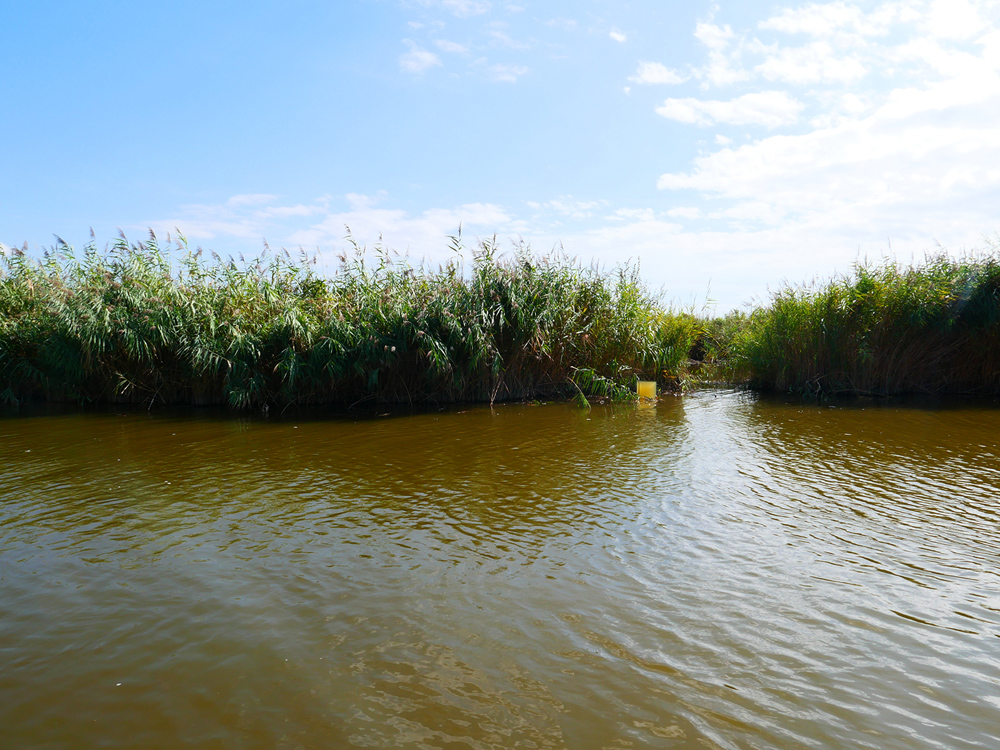
Due parole sull’importanza dei canneti, estratte dal testo integrale fornitomi dagli operatori Lipu:
“Le possibili soluzioni.
C’è ormai una certa unanimità tra la comunità scientifica e tra gli Enti responsabili della gestione del territorio che sia necessario bloccare il fenomeno della subsidenza e ripristinare i servizi ecosistemici svolti dai comparti palustri per riportare in equilibrio il sistema. Queste due necessità convergono in un unico intervento: riallagare le zone più basse della bonifica in modo da fermare la subsidenza e ricreare lì delle paludi a canneto dalle quali lasciar transitare l’acqua reflua dai terreni agricoli prima di pomparla nel lago in modo da ripristinare quel servizio ecosistemico fondamentale svolto dalla vegetazione palustre.”
Per seguire le proposte dell’oasi la pagina è https://www.facebook.com/oasi.massaciuccoli/
Un grazie speciale ai responsabili dell’Oasi che mi hanno accompagnato Marcello Labate, Andrea Fontanelli e Lucia Picchi.
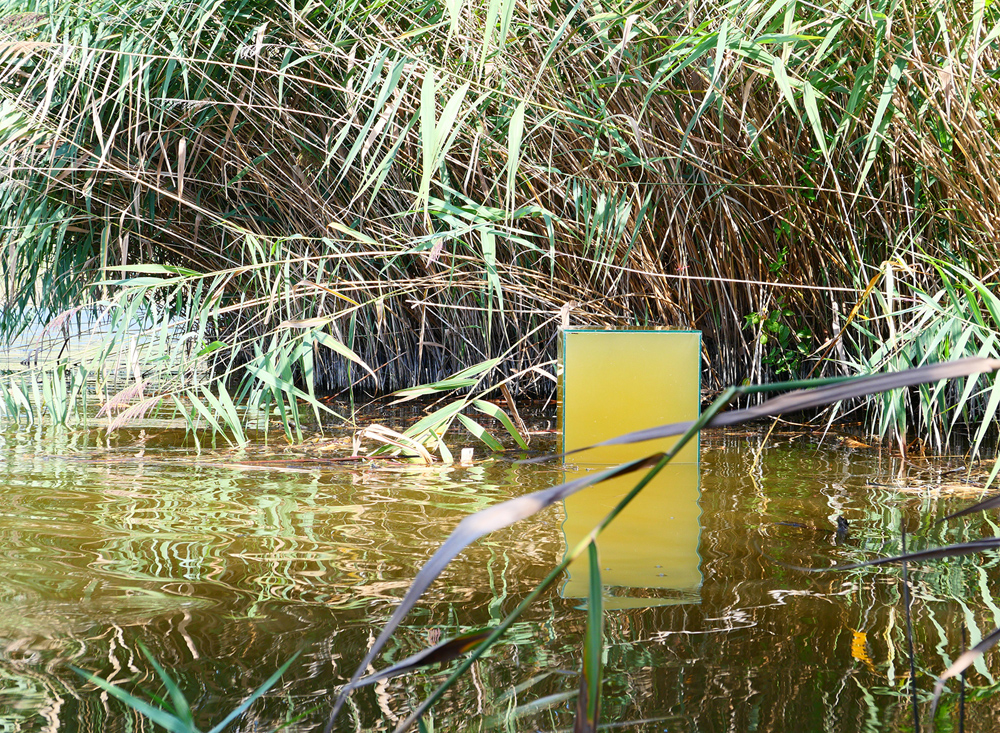
Extrusion 35 cm³
The Extrusion 35 cm³ project is represented by a sculpture-device that can be immersed in water and which produces an emergence of a portion of the affected aquatic mirror, making visible what is usually hidden “underneath” due to the reflection of light.
It was born in 2017 in Empoli within the project A path of signs / Art and Environment curated by Alessandra Scappini.
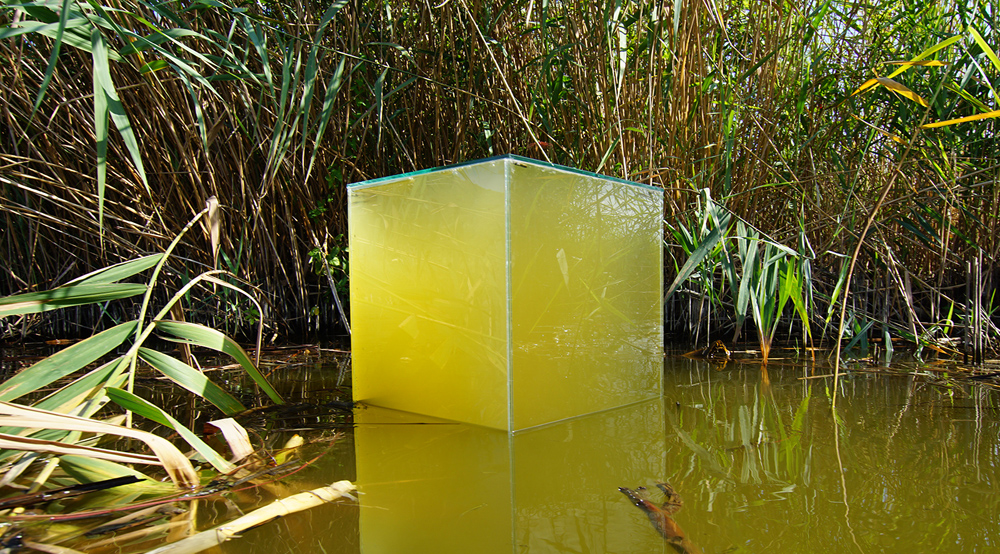
On Massaciuccoli’s lake, the extrusion was carried out at two different times.
The second extrusion, carried out in the first days of September 2020, takes place in the Port’s ditch, right near the entrance to a “Chiaro”; the instrument was placed on an “aggallato”, a small island composed of a floating reed bed that slowly floats on the water. These agglomerations are of capital importance for the ecosystem of the reserve.
Here the extrusion shows a huge difference in the color and density of the water, compared to the first time, this affects the type of life, plant, and animal, found in these places.
The Chiari are shallow pools of water, artificial environments created by cutting vegetation, originally they were produced to facilitate hunting, and today they are maintained for conservation purposes, being places that favor the reproduction of fish and amphibians and that provide food to waders and other birds.
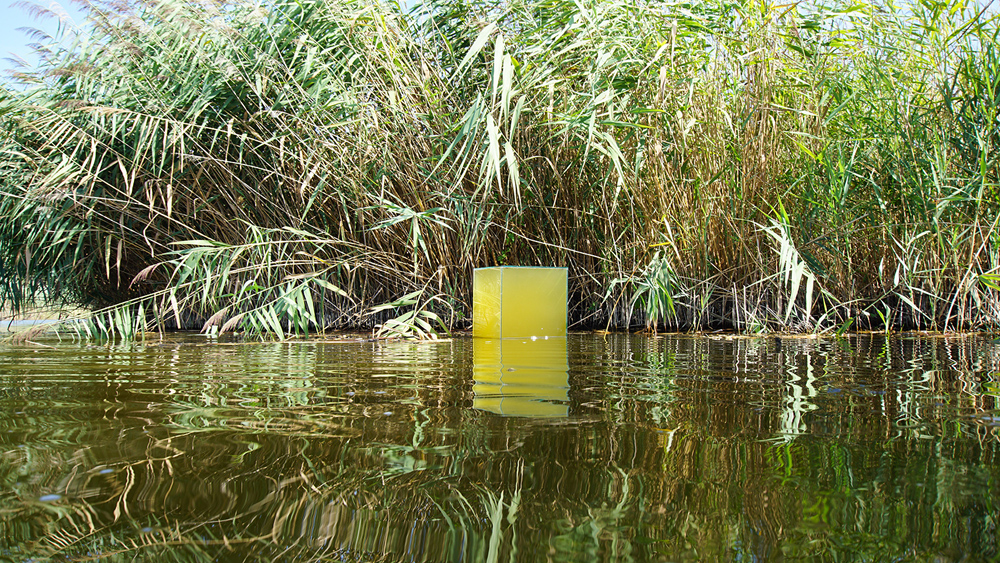
Two words on the importance of reeds, extracted from the full text provided to me by the Lipu operators:
“The possible solutions.
There is now a certain unanimity among the scientific community and among the bodies responsible for land management that it is necessary to block the phenomenon of subsidence and restore the ecosystem services carried out by the marsh compartments to bring the system back into balance. These two needs converge in a single intervention: to flood the lower areas of the reclamation in order to stop subsidence and recreate reeds marshes from which to allow wastewater to pass from agricultural land before pumping it into the lake in order to restore that fundamental ecosystem service performed by marsh vegetation. “
To follow the proposals of the oasis the page is https://www.facebook.com/oasi.massaciuccoli/
A special thanks to the managers of the Lipu Oasis who accompanied me: Marcello Labate, Andrea Fontanelli, and Lucia Picchi.
